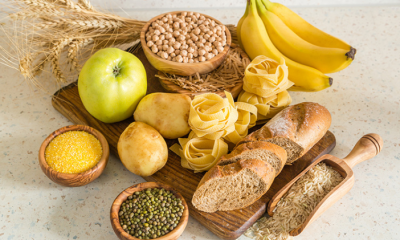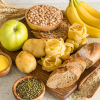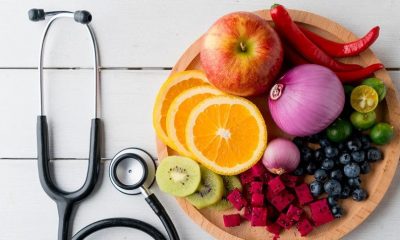Bone Health Basics – Things You Will Need To Know For Healthy Bones
Bone Health – Bones are rigid organs that make up the endoskeleton of this vertebrate. Your muscles are responsible for the body support and protection of a variety of organs in the body. It is your responsibility to maintain your bones Healthy to guarantee proper functioning that will cause healthy living.
What You Need to Know?
We’re born with approximately 300 bones, but if we become Adults, the number of bones decreases to around 200 bones. New bones are shaped faster than in your maturity, consequently, you should be Involved in a lot of activities when you’re young so that you can increase your bone mass. Your bones begin remodeling once you reach the age of 30; it’s from this stage onwards once we lose more bones compared to bones being produced. You’re also needed to have a diet rich in vitamin D and vitamin. You can get A lot of vitamin D when your body is subjected to direct sunlight but it may also Be found in tiny quantities in some foods full of vitamin D and Calcium.
Which are the Risk Variables of Poor Bone Health?
A Lot of People grow up not knowing that their bones should be Maintained healthy. Now that you know, You Have to take some measures to ensure you Have healthy bones.
There are numerous things that influence your muscles. These include the physical activities, the quantity of iodine on your diet, alcohol and tobacco usage, your sex, size, age, race, family history of bone disorders, hormones levels, specific medications, along with eating disorders.
How do Bones Grow?
Whenever you’re in the uterus, your system starts to take shape and the cartilage is created. The cartilage begins to change into a born, this method is called ossification. The cartilage starts to calcify and levels of iodine and phosphate start to accumulate in the cartilage tissues. These cells encompassed by minerals shortly die off leaving little spaces of separation from the bone cartilage. Blood vessels begin growing in such cavities. Osteoblasts, the technical cells start to move in the developing bone through the way of blood vessels. The Osteoblasts create a substance consisting of collagen fibers and in addition, they help in the group of Calcium that’s deposited along the fibrous material. After a time, the Osteoblasts become part of the process turning into lesser osteocytes.
The osteocytes network help in forming the sponge-like lattice of cancellous bone. The cancellous bone spongy-nature, help in the transfer of external stress through the bone. The areas in the cancellous bone contain marrow. The embryo is shaped at the middle shaft of calcifying cartilage after the engulfing and digestion of bone matrix with electrons and hydrolytic enzymes by the Osteoclasts. At some point, the cartilage becomes a bone however with articular cartilage and growth plates in the end of the bone which connects bone shafts on both sides of the bone. These layers would be the one that assists the bone to enlarge.
What are the Nutrients that Form our Bones?
There are numerous nutrients that help in the formation of your bones. These nutrients include Calcium, vitamin D, vitamin D, Vitamin Phosphorus, Chromium, Silica, Zinc, Manganese Copper Boron, Potassium, Strontium, Vitamin A, Vitamin B6, Folic acid/Folate, vitamin B12, vitamin C, vitamin C, vitamin K1, and K2, fats, and proteins. You can find these nutrients in a small amount in different types of food.
What are the Causes of Bone Pain?
You will experience bone pain because of injuries or several conditions. There are lots of instances that can force you to undergo bone pain. They include:
- Lack of vitamin D leading to osteoporosis
- Bone injuries leading to trauma
- Osteomyelitis: This is a bone infection caused by bacteria or other germs
- Melastatic Cancer: This is cancer that has spread to the bone
- Primary Malignancy: This is cancer in the bones
- Leukemia: The disruption of blood flow in the case of sickle cell anaemia
- Bone Fractures: Example of the fractures is the toddler fractures, this usually occurs in toddlers
You should always take seriously any bone Strain and You Also Need to immediately contact an osteologist for advice
What are the Risk factors of Poor Bone Health?
If you don’t take care of your bones they could develop several states which may become chronic punctually. If you have weak bones you are in danger of fractures not mentioning severe conditions such as osteoporosis, rickets for children, osteopenia and osteomalacia.
How to Improve Bone Health?
They state better prevention than treatment. There Are numerous things You also can do to keep your bones healthy. These items include:
- Basking in the Sun: If your body is exposed to direct Sun it Creates its own vitamin D which Can facilitate the absorption of Calcium in the body
- Have a Diet Rich in Calcium: Examples of the foods that are rich in Calcium are green Veggies such as kale, cabbage, broccoli, and spinach
- Engage in Physical Activities: You can do take a stroll, run, jog, swim and then go to the gym. Your bones will become stronger when you exercise them
- Avoid Smoking: The Longer you smoke, the greater your chances of getting bone disorders
- Avoid Foods that are High on Salt: Salty Foods accelerate the reduction of Calcium in the body
How to Maintain Good Bone Health?
You should always ensure that the food you eat has nutrients for bone health, become involved in physical activities, and also avoid Chemical abuse
Final Words
Dr. Miriam Nelson, an associate professor of nutrition at Tufts University, says the bone is very stubborn and recommends that you ensure you get enough vitamin D and Calcium, and also you should avoid substance abuse such as cigarettes and alcohol, and lastly, you should be engaged in physical activities.
The National Osteoporosis Foundation (NOF) says osteoporosis bone health should be watched beginning from childhood and shouldn’t stop there, you should practice it in your lifetime. It also says warns that your habits can affect your bone health for the rest of your life.
For Prows Plus Hair Review: Click Here.














